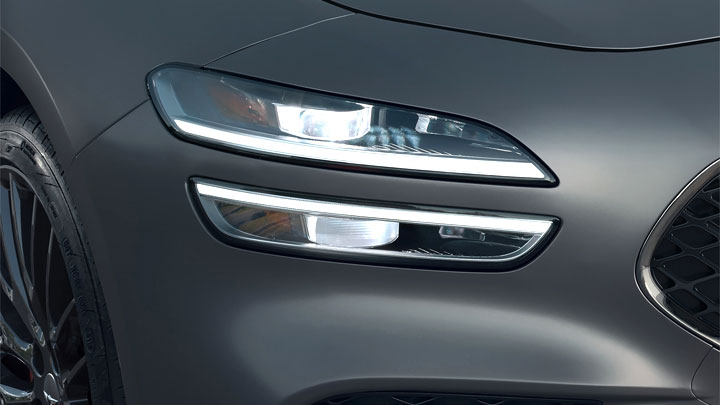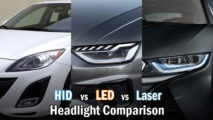Last Updated on January 25, 2022
Gone are the days when all cars and trucks had the same types of lights. Instead, there are a variety of different headlight types and technologies in use today, which differ based on the bulb type, bulb number, or kind of housing (which affects how the light is emitted) that’s used.
Let’s have a look at these (sometimes unusual) types of headlights in use today.
Read Also: 13 Types of Car Doors
Types of Headlights
#1 – Filament Bulb Headlights
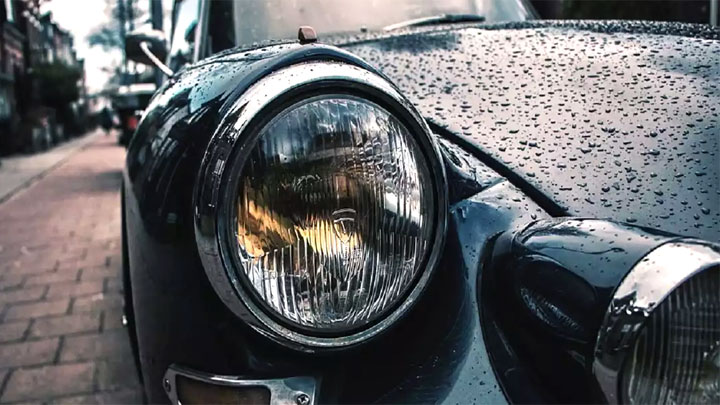
The oldest cars on the road used a simple filament bulb that’s no different from the ones you may still have in your home.
The heavy-duty bulbs were common in sealed beam-style reflective headlights and consisted of a filament suspended in a vacuum. As electricity passes through, it heats the filament, giving off light.
They give off a yellowish light, use more energy to function, and are much hotter than other bulb types. As a result, this type of bulb is slowly being phased out worldwide in both the automotive and home markets.
#2 – H4 Conversions

These are a modified form of reflective headlight that allows bulbs to be replaced without having to discard the housing, much like modern reflectors. However, the housing design is compatible with LED and HID bulbs.
Much like reflective headlights, the H4 produces a duller, more uneven beam than projector headlights. This makes them a cost-effective way to update the reflective headlights of older car models but a poor choice for the default lights in modern cars.
#3 – HID Headlights (aka: Arc, Plasma, or Xenon Headlights)

Short for High-Intensity-Discharge, these bulbs have two electrodes in a glass tube filled with xenon gas and vaporized metals. An electric current arcs between the electrodes, melting the metal vapors into plasma. The resulting bluish-white light bounces off a reflective housing and may be focused into either a narrow or broad beam.
HID lights are the topic of some controversy. On the one hand, they’re becoming increasingly popular due to the amount of light they put out, which is more focused and has a longer range than filament bulbs. They also have a longer lifespan. So when you’re behind the wheel, the bulbs are very beneficial.
On the other hand, they take a while to reach full brightness and can affect your ability to see things outside of the beams due to their intensity. While still popular, they are slowly being replaced by newer technology like LED.
Related: HID vs LED vs Laser Headlights (Which is Best?)
#4 – Halogen Bulb Headlights

Halogen bulbs are a replacement for the filament bulb lights used in older cars. Instead of a vacuum, the filament is suspended in a combination of bromine and iodide gasses.
Halogen filaments burn brighter because they’re also heating up the surrounding gas. This makes them a cheap and more effective alternative to the older filament bulbs. However, the beams are still weaker and slightly more yellow than other options and have a shorter range.
See Also: How to Get Moisture Out of Headlights
#5 – LED Headlights
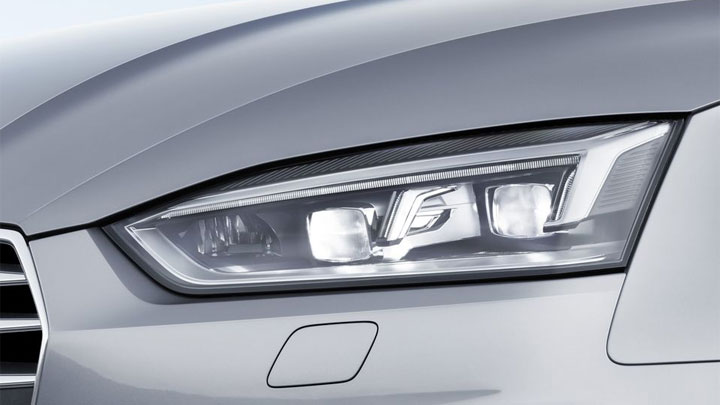
LED headlights may be fairly new to the automotive industry, but they’re already proving a major competitor against HID lights. These lights are incredibly cost-effective and overcome the drawbacks of most other bulb types. In addition, they can be turned on or off instantly since there are no gasses or other mediums that need to cool down. They’re also very compact and have a very long lifespan.
LEDs don’t heat up, although the emitter chip can get quite hot and requires a heat sink, making the initial purchase of an LED bulb quite expensive. However, once purchased, their superior energy efficiency quickly recoups this cost. The semiconductors are also highly adaptive, allowing the focus and light level to be adjusted to precise levels in a fraction of a second.
While LED lights are superior to HIDs, the initial cost is off-putting to car manufacturers, limiting this newer tech to only some vehicle models. However, their popularity is growing quickly, as the ability for LEDs to use any part of the light spectrum makes them far safer than HIDs.
Even more fun, LED headlights don’t actually require housings, meaning we could have smooth-faced cars similar to those with retractable lights, but with the light being emitted from seemingly nowhere.
That said, because LED headlights are so bright, they must be precisely aimed so as not to blind oncoming traffic. Even then, there are constant complaints that some car manufacturers (namely Honda and Toyota) are equipping their vehicles with headlights that many consider to be too bright.
#6 – Laser Headlights

Laser technology has come a long way since its inception, and the laser headlight may well become the future of the road. A laser headlight can produce a light that’s thousands of times the intensity of an LED light at a fraction of the power (which is already tiny).
Three blue laser beams meet in a chamber containing yellow phosphorus gas (the same thing that makes objects glow in the dark). The beams cause a chemical reaction in the gas, which produces light.
With a range of 2,000 feet and the ability to rival natural daylight in terms of brightness, one might wonder why laser headlights aren’t common. However, the tech is brand new and requires even more cooling than LEDs. As a result, only a handful of vehicle models from BMW and Audi currently offer them as an option and they carry an expensive price tag.
While laser headlights are the future, they will likely never replace LEDs for features such as taillights.
#7 – Matrix Headlights (aka: Adaptive LED Headlights)
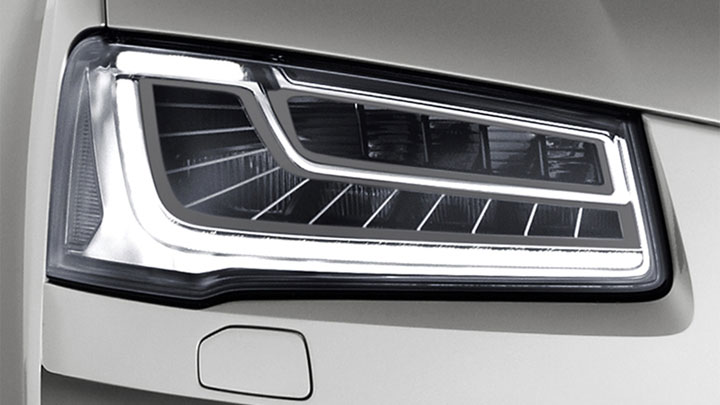
There’s no denying that cars are getting smarter and now make good use of cameras and onboard computers. One excellent example of this is in the matrix headlight. These fascinating inventions won’t slow time or protect you from Agent Smith, but they can still do some pretty spectacular things.
A matrix headlight consists of multiple LEDs per housing and a front-mounted camera. The onboard computer registers other vehicles using the camera and sends a signal to the light housing.
This causes any bulbs that would affect the oncoming or leading vehicles to turn off while the rest remain on. As a car approaches, the gap in the beam actively follows them, darkening ahead and lighting up behind.
The advantages of this kind of beam are obvious. There’s no need to switch between high and low beams. The risk of causing accidents is greatly reduced. It produces a really cool visual effect as well.
Unfortunately, the big drawback is that there are more components that have to function properly for the lights to do their job, namely the camera and computer. If one of these becomes faulty, the lights will fail.
While these “smart” headlights are currently in use in many European countries, they have been banned from use in the United States… until recently.
#8 – Non-Quad Headlights
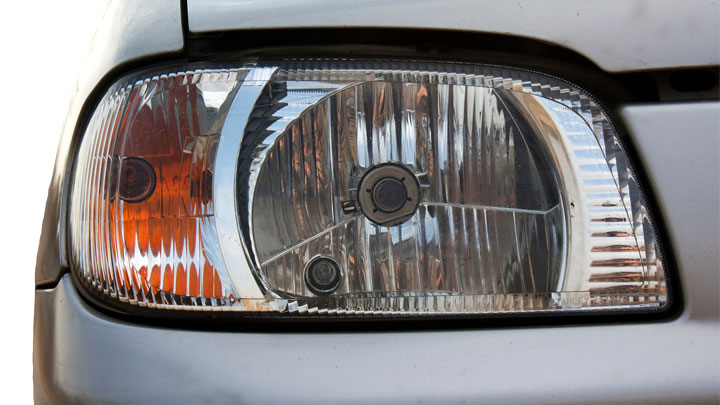
Smaller cars usually have non-quad headlights. This simply means the vehicle has only two bulbs in front, one on each side. While not as bright as the quad design, non-quads are a little cheaper to maintain.
#9 – Projector Headlights
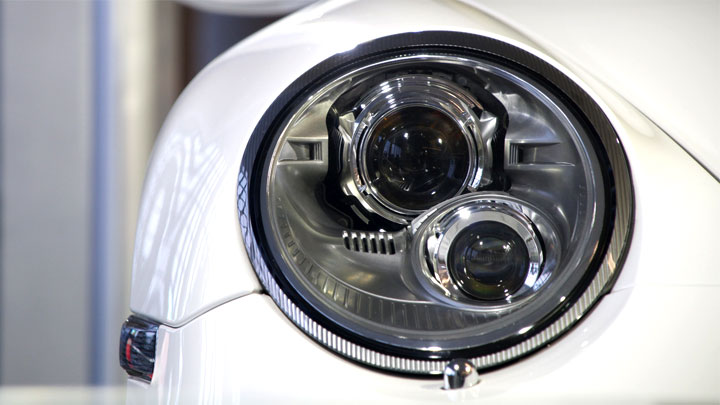
First used in luxury cars in the 1980s, the projector headlight is an evolution of the reflective headlight. It consists of a mirrored steel housing, a curved lens that magnifies the beam, and a cutoff shield that prevents light from bleeding outside of the intended beam radius.
The improved lens design is what has made projector headlights overtake their reflective counterparts. The beams are directed towards the ground, making them less distracting to oncoming traffic.
They’re brighter and evenly distributed, as well as compatible with HID bulbs. The only real downside is that they can be difficult to get used to for older drivers who are used to the different kind of light beam that a reflective headlight gives off.
#10 – Quad Headlights

Popular in many modern cars, the quad headlight design has wider housing and additional wiring to accommodate two bulbs on each side. This provides stronger light output than non-quad headlights but may result in higher maintenance costs.
As a result, most larger vehicles use the quad design, while most small cars have non-quad.
#11 – Reflector Headlights
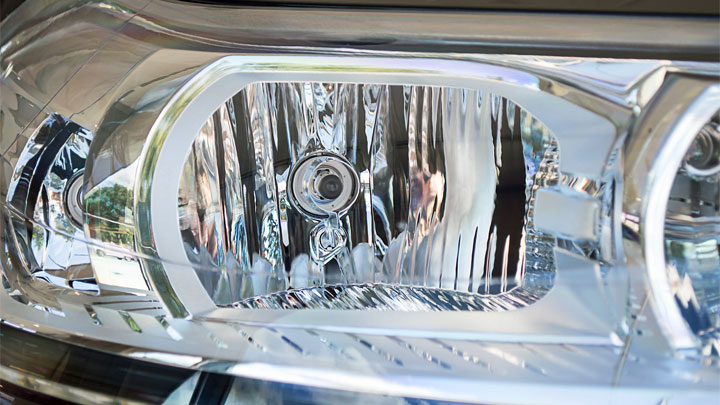
This was the standard form of headlight housing from the beginning all the way up until 1985. While not as common now, it’s still one of the most effective types of headlight housings.
The design is simple: a bowl-shaped housing is made of a reflective metal in which the bulb is mounted. When the bulb is on, any light that’s cast towards the bowl is reflected back out, making the headlight beam brighter than it otherwise would be.
Originally, reflective housings were known as sealed beam headlights. The design used a lens as part of the housing, and the bulb was sealed inside this shell, meaning the entire housing had to be replaced when a bulb burned out.
The lens design has been replaced with a mirrored surface in more recent years. This advancement meant the lens no longer needed to be sealed onto the housing, allowing mechanics or car owners to simply replace the bulb as needed.
Thanks to their design, reflective headlights are smaller and cheaper than other housing types, although they have some drawbacks. For example, the design isn’t compatible with high output bulbs, and low beams aren’t as visible to oncoming traffic. They also provide less light in poor weather conditions like heavy rain or fog.

